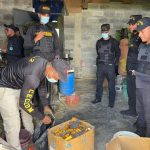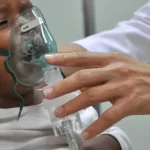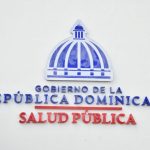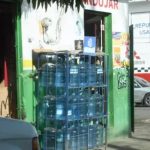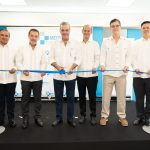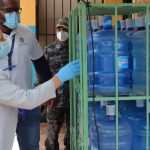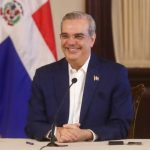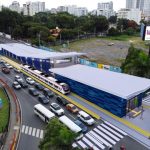Top official touts investment opportunities at Trinidad conclave

Port of Spain,Trinidad & Tobago. The Dominican Republic presented here, beforepotential energy investors and government authorities of this oil-producingisland, the opportunities it will shortly open for private capital inhydrocarbon exploration and production in its territory.
Information on this was shared bythe Minister of Energy and Mines of the Caribbean nation, Antonio Isa Conde, with a select audience gathered at theRegional Energy and Development Conference, being held from January 18-20 inthis English-speaking country, major natural gas and liquefied petroleumgas supplier to the Dominican Republic.
Isa Conde revealed undisclosedinformation that the country will shortly make available to interestedinvestors more than 12,590 linear kilometres (7,885 miles) of 2D seismiclines, in a virgin territory with no concessions granted for the prospectingand production of hydrocarbons.
He also said the country will soonhave a National Hydrocarbon Database which is being set up by the renownedinternational firm of Schlumberger-Surenco, whose services were engaged by theDominican government. This company is aregional subsidiary of Schlumberger which is, in turn, the major oil servicesprovider worldwide.
The official stated that theinstitution has been able –since May last year– to organize, systemize andenter data for a series of high-value information for potential investors whichwill serve to create hydrocarbon exploration blocks to be tendered in theupcoming months under specific contracts.
Likewise, he revealed that the stateentity he heads has made entries for approximately 1,491 maps and drawings, 805seismic profiles, 212 well logs, 321 files or reports, 209 magnetic tapes andhas recovered a series of geophysical information dating back to 50 years whichwere scattered throughout the Dominican Republic and, therefore, rendereddifficult to access by interested stakeholders.
“The information available that hasbeen formatted to the latest software on the subject can be used as input tocreate models on the components of our sedimentary basins. Only with the information recovered from themaps, filed in very poor conditions, we have stored in “SEG Y” (the standardindustry format) some 4,576 kilometres (2,843 miles) of 2D seismiclines”, Isa Condehighlighted.
The Minister of Energy and Mines ofthe Dominican Republic also reported the recovery of a series of reports fromworldwide renowned think tanks such as the University of Texas at Austin and Universidad Complutense de Madrid. “These reports”, he pointed out, “haveallowed adding 8,126 additional kilometres (5,049 miles) of 2D seismic lines, for a total of12,690 kilometres (7,885 miles) of available seismic lines.
Likewise, heindicated that the Ministry is drafting a conventional and non-conventionalhydrocarbon exploration and production regulation and, with the support ofOLADE and Canadian cooperation funds, it is elaborating industrial andenvironmental safety standards to govern the possible hydrocarbon productionactivities in the country.
He further stated that the institutionprepares model contracts and terms of reference for a bidding process to becalled in the first quarter of this year to award exploration blocks.
“We would be very pleased to have youaccompany us in developing the nascent energy industry of the DominicanRepublic, taking advantage of the opportunities offered and the adequatebusiness climate we promote for investment”, Isa Conde expressed.
The conference was attended by suchpersonalities as Nicola Olivierre, Minister of Energy and Energy Industries, Trinidadand Tobago; Vernon Paltoo, President National Energy Corporation y NormanChristie, Regional President of British Petroleum (BP), as well as Eugene Tiah,President Massy Energy. Also, DaxDriver, CEO of the Energy Chamber of Trinidad; Frank Look Kin, Senior Advisor to the Minister of Energy of Trinidad& Tobago.
InvestmentClimate in the DR
Isa Conde further discussed thecurrent economic conditions of the Dominican Republic and the adequateinvestment climate that he sustains prevail in the country hand-in-hand with ademocratic government which conducts itself with a vision of development.
He communicated that in the course of the past year of 2015,the Gross Domestic Product (GDP) of the country grew 7.0%, leading for the secondconsecutive year the relative growth performance of the remaining economies ofLatin American, with a low level of inflation closing scarcely at 2.34%, and avery moderate devaluation of the Dominican peso of only 2.6%, contrasting withthe strong depreciations experienced by the principal Latin American currenciesvis-à-vis the US Dollar.
“The country, strategically situated in geographical terms,has an important road infrastructure development that facilitates making fastconnections from any point as well as world-class port and airport structuresfor foreign trade, which -adding imports and exports of goods- together exceed US$26,500million in 2015”, pronounced Isa Conde.
He commented that an essential partof the country’s intangible capital is the congeniality of its people, beautifulbeaches and a myriad of agreeable micro climates in both mountains and plains.“Not surprisingly, the Dominican Republic is today the Caribbean country thathas received the most Direct Foreign Investment, again surpassing US$2,000 millionin 2015, that is, 3.8% more than the previous year,” he claimed.
Further information: www.mem.gob.do


